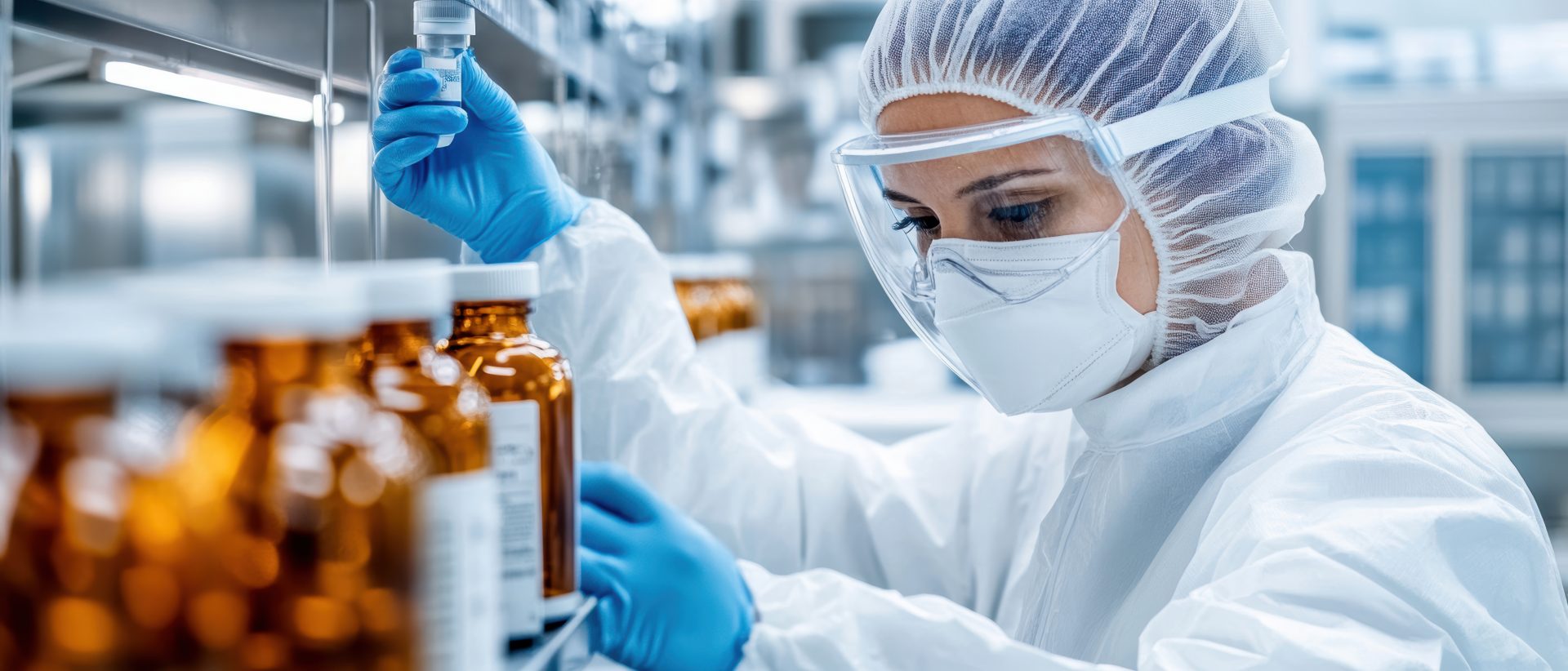Revolutionizing Drug Safety through Real-World Evidence

- Feb 19, 2025
- 7 Min. Read
Over the past 40 years researchers have made significant strides in developing new drugs to treat everything from obesity to cancer to rare disease. By utilizing cutting-edge techniques such as computer-aided drug design (CADD), artificial intelligence (AI), and machine learning (ML), both the time and cost associated with new drug development has significantly decreased. However, it is critical not to lose sight of what happens once these new medicines enter the marketplace. Real-world evidence (RWE) provides an opportunity to track the effects of medications on real people in real settings, revolutionizing our ability to monitor drug safety and gain critical insights from real-world treatment outcomes.
But what is RWE and how is it generated? RWE refers to evidence generated from real-world data (RWD). This includes data collected any time you visit a healthcare provider and is typically stored in an electronic health record (EHR). It may also come from wearable devices like smart watches, rings with biosensors, or continuous glucose monitoring devices, to name a few. Insurance claims are another great source of RWD. Claims capture disease diagnosis, such as diabetes, and any medications or devices used to treat the disease, like insulin or an insulin pump. Using one or a combination of these data allows researchers to see how a medication is performing over time, in different patient populations, and in different settings.
Leveraging RWE to capture safety insights has gained significant momentum over the past few years within the pharmaceutical industry. Drug companies have increasingly begun incorporating RWE into their regulatory submissions for new drug applications and as support for label expansion on existing medications. The cost associated with RWE studies is drastically less than the cost of doing a clinical trial and can capture a broader population. The amount of available RWE continues to explode as an ever-increasing amount of EHR data is populated, stored, and made available for analysis. With more than 88% of clinicians using an EHR, its universal adoption has fueled this momentum. Beyond the EHR, patient registries, often associated with professional societies, link with hospitals to capture disease specific data, monitor treatment, and provide society members with important information.
But RWD can be messy. The data is not always where it is supposed to be. And its format doesn’t always lend itself to easy abstraction. Innovators, hoping to capitalize on these data challenges, are emerging to provide expertise on data abstraction (e.g., mining clinical records using AI and ML techniques) and database aggregation and standardization (linking multiple disparate sources of data). Additionally, an increasing number of companies have expanded their analytical capabilities such as machine learning (ML) and natural-language processing (NLP) to convert clinical notes into structured data, a process that may greatly improve the value of RWD in terms of researching clinical outcomes.
RWE enhances drug safety in several ways, including some already mentioned above. Leveraging RWD from patient registries provides information on the long-term outcomes and safety of medications in diverse populations, alerting clinicians and regulatory agencies when caution or further investigation may be warranted. Analysis of EHR data allows researchers to track patient response to medication, including adverse events, and monitor medication adherence over time and in real-life scenarios.
Researchers can also tap into social media, online forums, and other real-world sources using techniques such as web-scraping to capture RWD not previously recognized. This enhances pharmacovigilance (the monitoring of post-market drug safety and efficacy). Some manufacturers and patient groups have also created apps to encourage patients to report side effects directly, allowing for more timely identification of potential issues.
Using advanced analytics such as machine learning models, researchers can now process large datasets from various sources such as claims data or patient surveys. This provides an additional avenue for identifying trends related to medication use and potential safety concerns. Similarly, predictive analytics allow researchers to analyze patterns from historical data. In this way, researchers, manufacturers, and regulatory agencies have the power to identify and mitigate risks before they become widespread.
By sharing RWE with regulatory agencies, drug manufacturers expedite insight generation and enable informed decisions on drug safety and efficacy profiles throughout a product’s lifecycle. This also allows for quicker adjustments to product labeling and the opportunity to provide recommendations based on emerging real-world data.
Providing researchers, manufacturers, and regulatory agencies access to RWE enhances our ability to monitor drug safety and do so in a timely manner. Just as important, however, patients deserve access to RWE. Because RWE is generated from RWD collected from patients with a diversity of social, racial, ethnic, and regional backgrounds, and with a variety of coexisting health conditions, this information gives patients the ability to view drug safety profiles observed in real populations and in real patients just like them. Subsequently, patients can make well-informed choices about their treatment options.
The nature of RWE instinctively promotes and inspires collaborative research efforts. Public-private partnerships, such as the Accelerating Medicines Partnership (AMP), inclusive of academia, healthcare providers, and tech companies have led to the creation of comprehensive databases that enhance our overall understanding of drug safety. Beyond this, thinking globally, the development of international databases to analyze drug safety across even more diverse healthcare systems and populations will enhance pharmacovigilance to an even greater extent than currently seen.
Improving drug safety monitoring through RWE is crucial for ensuring patient safety and enhancing the effectiveness of treatments. Some key strategies and advancements include: utilizing artificial intelligence, automated data collection, agentic and multi-agentic AI, enhanced signal detection, and improving data standardization. Further, more interpersonal strategies might include collaboration and communication in addition to patient education and reporting. By leveraging these strategies, the field of pharmacovigilance can continue to evolve, ensuring that the benefits of medications outweigh their risks and ultimately protect the public health.

